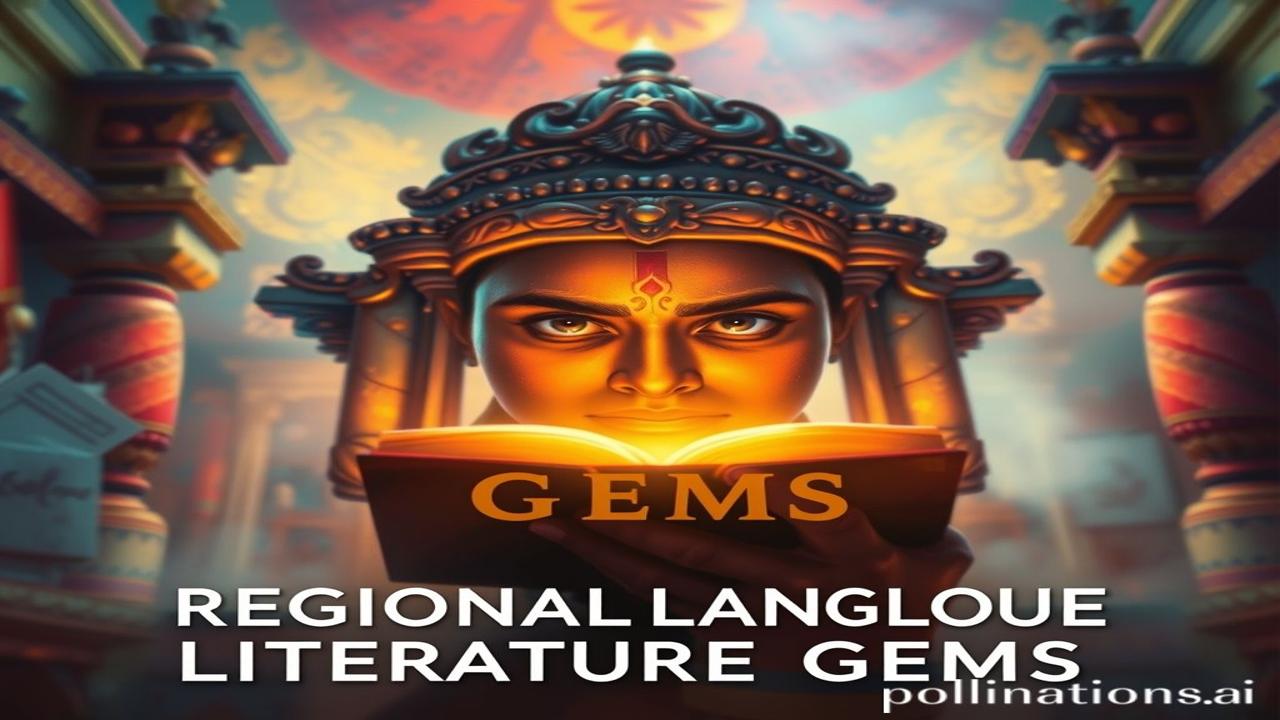Okay, let’s dive into a world where words are jewels, and stories are the breath of life. Get ready to explore the dazzling universe of regional language literature in India!
Waqt Ki Dhool Mein Chhupi: Regional Literature Gems
Kabhi socha hai, in bharpoor rangon aur dhunon se bhare Bharat desh mein, kitni kahaniyan mitti ke neeche dabi hain? The whispers of ancient tongues, the cries of forgotten heroes, the lullabies hummed by mothers long gone… Waqt ki dhool mein chhupi, yeh kahaniyan regional literature ke roop mein humare saamne aati hain – gems waiting to be discovered and cherished.
Historical Tapestry: Buniyaad Ki Kahani
What exactly is regional language literature? It’s not just stories written in languages other than Hindi or English. It’s a vast ocean of narratives reflecting the unique culture, traditions, and experiences of specific regions within India. Think of the vibrant Bangla literature flowing from the banks of the Ganga, the soulful Malayalam poetry echoing from Kerala’s lush backwaters, the powerful Punjabi stories resonating with the spirit of the five rivers, and so much more!
When did this happen? It’s an ongoing story. While oral traditions have existed for millennia, written regional literature gained momentum during the medieval period and the Bhakti movement (around the 6th to 16th centuries). The emergence of printing in the 19th century truly democratized literature, making it accessible to a wider audience and fueling a literary explosion.
Why is it important? It’s the soul of India! Regional literature is where Bharatiyata truly lives. It’s where we find the authentic voices of the people, unburdened by colonial influence or mainstream narratives. It protects the “शक्ति” (power) of local traditions and keeps alive the “कला” (art) of storytelling in its purest form.
Zameeni Sach: Log Aur Jeevan Ki Jhalak
Imagine a bustling marketplace in Madurai, Tamil Nadu, during the Sangam period (3rd century BCE to 3rd century CE). Merchants are haggling over spices and silk. Poets are reciting verses about love and war. Farmers are selling their harvest, their faces etched with the sun and the soil. These were the stories being sung and told, the foundation of Tamil literature.
Or picture a weaver in Assam, carefully weaving intricate patterns into a Mekhela Chador while narrating the tales of his ancestors. His hands move with the rhythm of the Brahmaputra, each thread holding a piece of his heritage. These are the stories that fuel the artistic spirit of the region.
Ma Rukmini ne aaj naye kapde pehne, kyunki mandir mein utsav tha. The aroma of sandalwood and jasmine filled the air as she walked to the temple, reciting verses from the Bhagavata Purana in Odia. These simple, daily moments, captured in literature, connect us to the past and remind us of our shared humanity.
Dharohar Aur Pehchan: Aaj Ke Bharat Mein
Today, regional literature thrives. From literary festivals celebrating regional languages to translations making these works accessible to a global audience, the spirit of regional storytelling is alive and well. We see its presence in our films, music, theatre, and even in the way we speak.
The richness of regional literature is woven into the fabric of modern India. It strengthens our understanding of “धरोहर” (heritage) and helps us define our individual and collective identities. It challenges dominant narratives and provides space for diverse voices to be heard.
Mazedar Tathya: Kya Aap Jaante Hain?
Log samajhte hain ki “regional literature” sirf gaon aur kisan ki kahaniyan hai, lekin asli sach yeh hai ki ismein urban life, science fiction, aur philosophical debates bhi hote hain! Many regional languages have rich and complex histories, and their literature reflects this diversity. Did you know that some ancient Tamil poems predate even the earliest Sanskrit texts? Mind-blowing, right?
Drishya Aur Bhavnaen: Anubhav Ki Gahrai
Imagine walking through the streets of Kolkata during Durga Puja, the air thick with the smell of incense and freshly fried snacks. The sound of dhak drums echoes through the city, creating a vibrant atmosphere. You feel the energy and excitement as you witness the elaborate pandals and the joyous celebrations. Bengali literature captures this spirit, bringing it to life on the page.
Or picture yourself on a houseboat in Kashmir, gliding across the tranquil waters of Dal Lake. The air is crisp and cool, and the mountains are reflected in the shimmering water. You hear the gentle lapping of the waves against the boat and the distant calls of birds. Kashmiri literature evokes this sense of peace and serenity, transporting you to a world of natural beauty.
Antim Vichar: Shabd Hi Jeevan Hai
Regional language literature is not just about preserving the past; it’s about shaping the future. It’s about giving voice to the voiceless, challenging the status quo, and celebrating the diversity that makes India so unique. Let us embrace these linguistic treasures and allow them to enrich our lives.
“भाषासु मुख्या मधुरा दिव्या गीर्वाणभारती।
ततो हि काव्यं मधुरं तस्मादपि सुभाषितम्॥”
(Among languages, Sanskrit is foremost, sweet, and divine. Even sweeter is poetry, and sweeter still is a well-spoken word.) But let us remember, the sweetness of a well-spoken word resides in every language, every regional voice contributing to the symphony of India. Let the stories be told!
